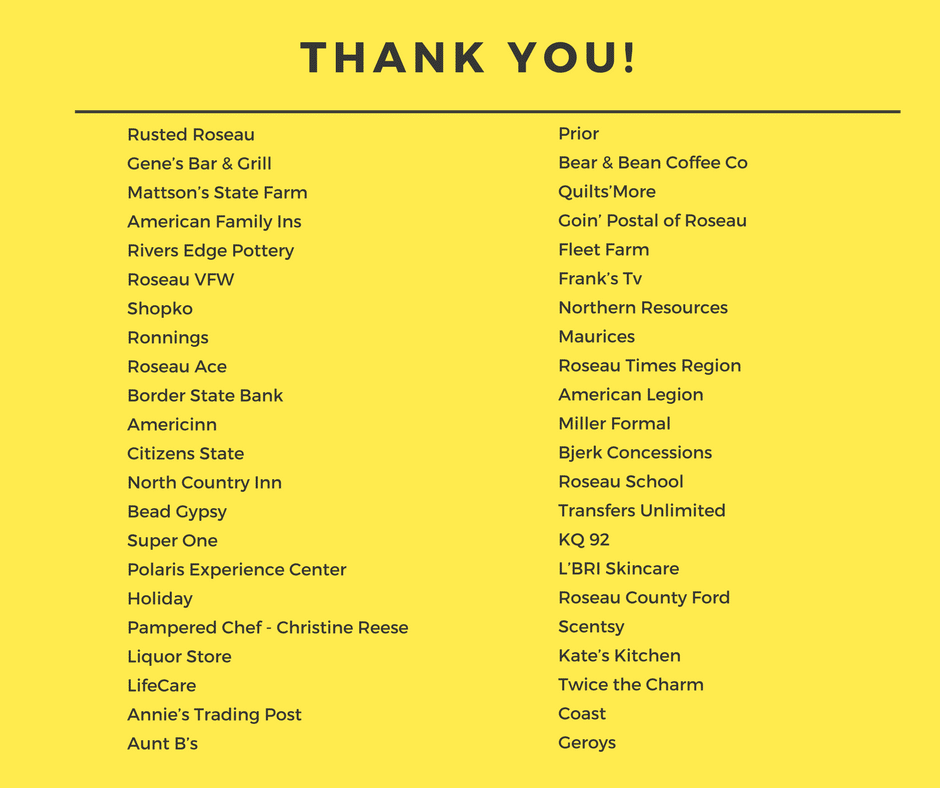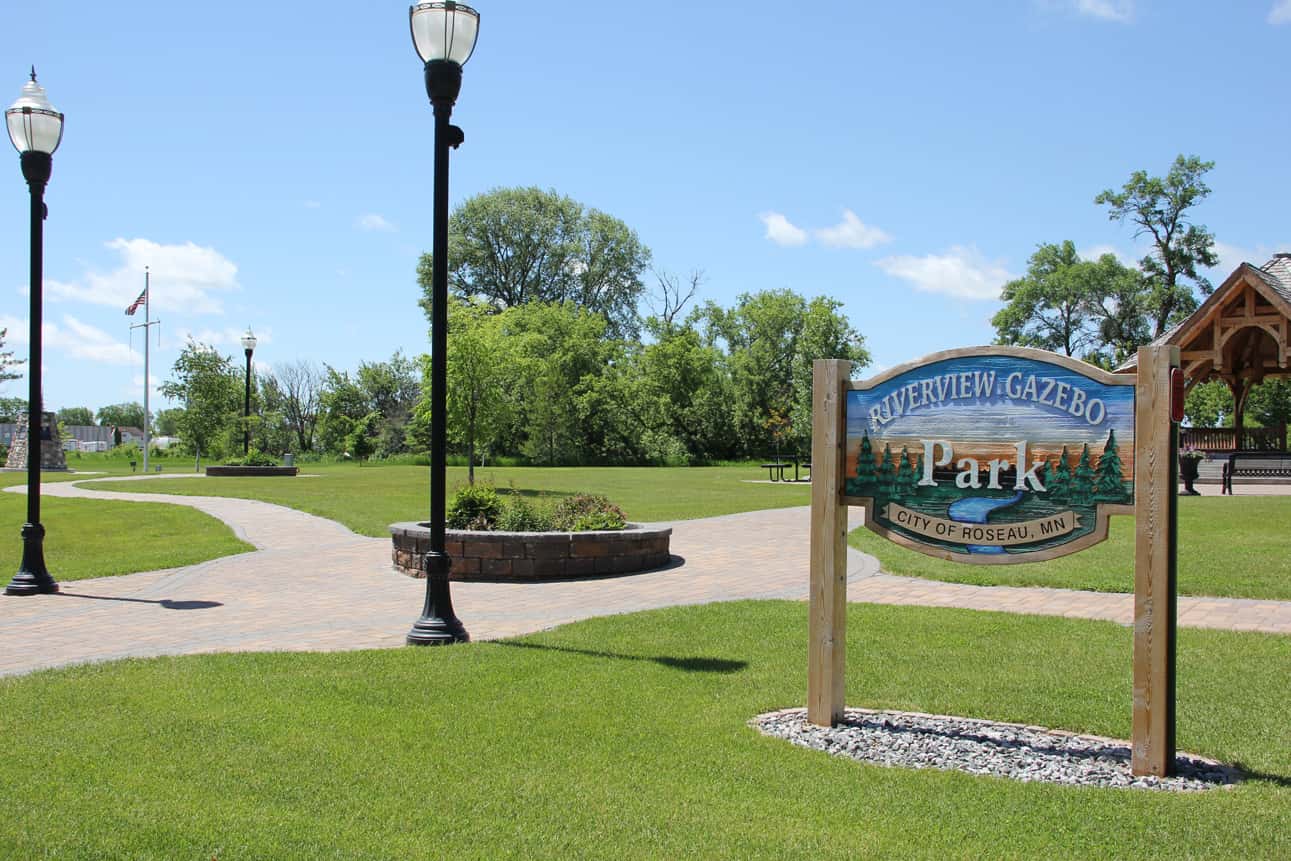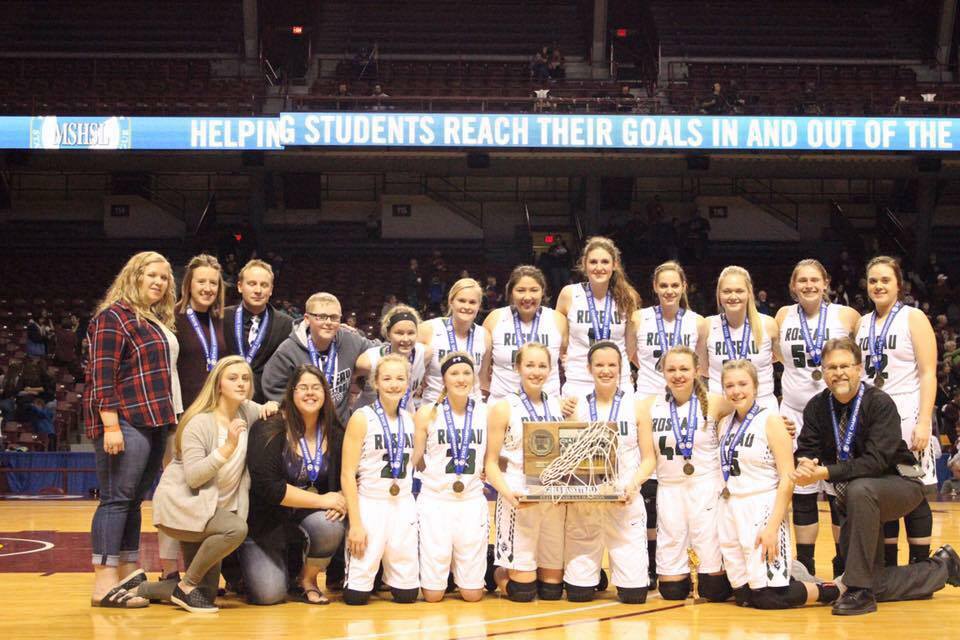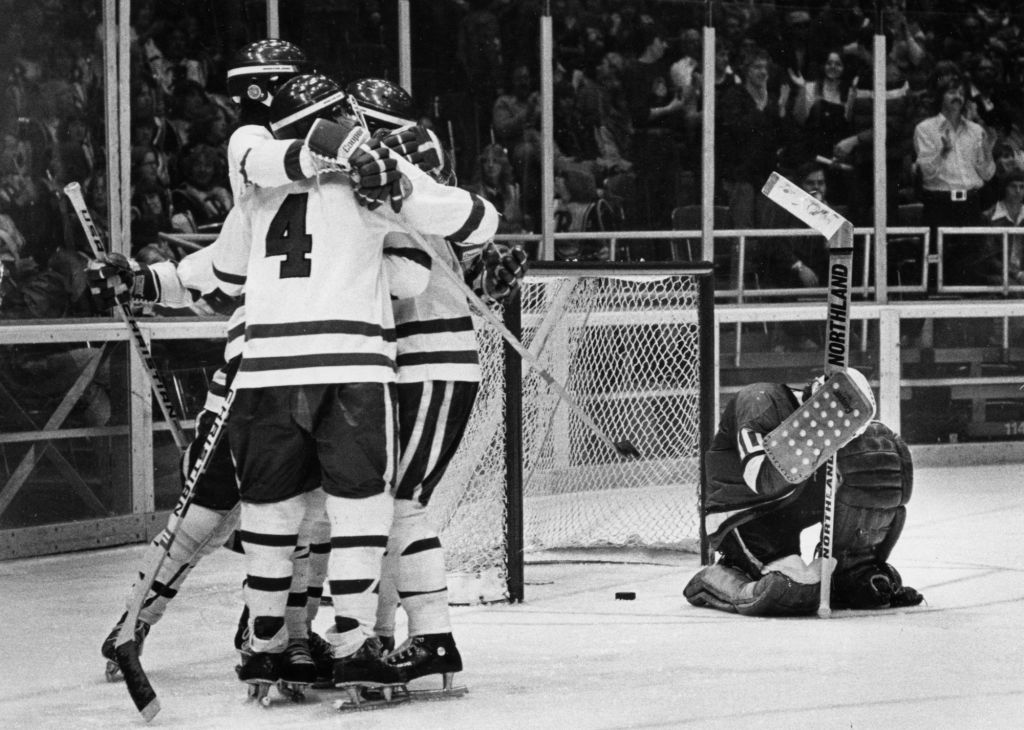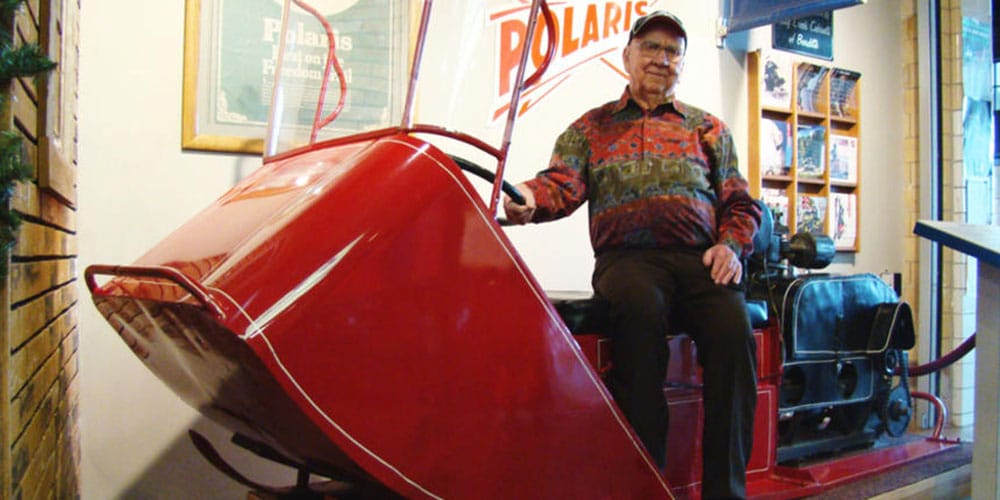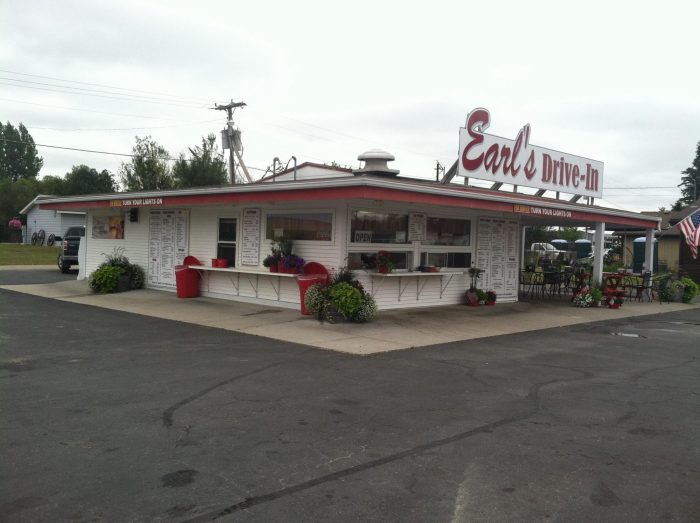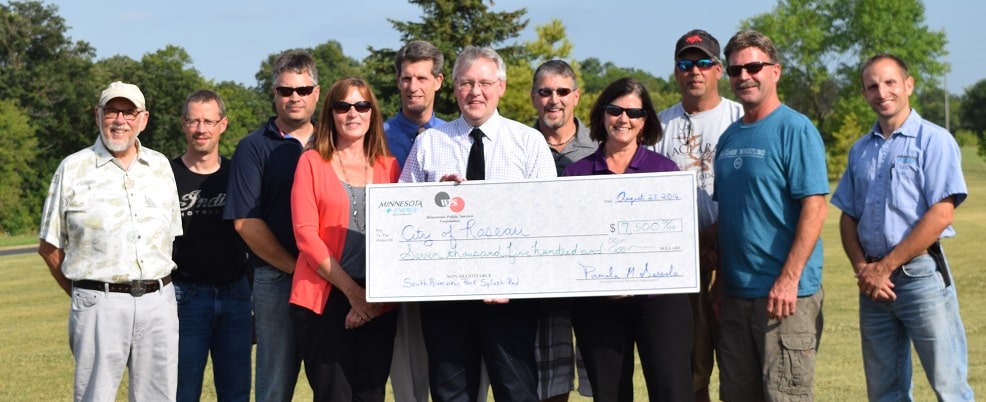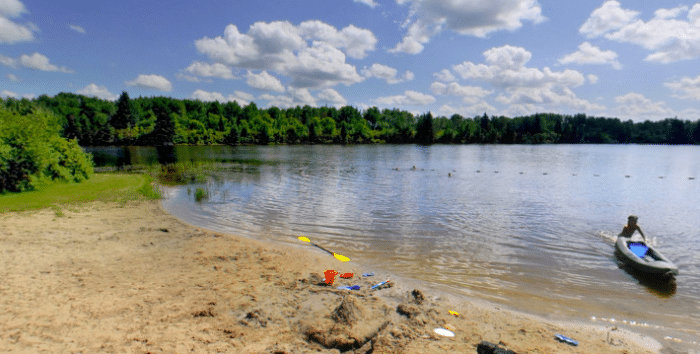The Roseau River spilled out of its banks and topped makeshift dikes on June 11, 2002, after up to 20 inches of rain swamped the area for miles in every direction. The water came from the river, it came overland from higher ground to the west and it came through the storm sewers.
There was too much, and it came too fast.
“People were still sandbagging, and half the town was under water,” 18-year Roseau Mayor Jeff Pelowski said. “The aftermath was a mess and pretty much shut the whole town down.”
The flood affected 90 percent of the businesses and 85 percent of the residents in this town of 2,652 people 10 miles south of the Canadian border. Most of Roseau County and nearby communities such as Warroad, Minn., battled water after the deluge, but it was Roseau, the county seat, that got it the worst.
The river at Roseau shot up 15 feet in a day and crested at 23.4 feet; flood stage is 16 feet.
Ultimately, more than 70 structures were removed after the flood because of the damage they sustained, Pelowski said. That included some key city facilities.
“We lost our police department, library, museum and the city hall,” Pelowski said.
Roseau today is a different community than the town that flooded 15 years ago. Better, in many ways, with key infrastructure improvements such as a new storm sewer system, new city center and permanent flood protection designed to divert floodwaters around the east end of the city.
Still, there have been plenty of rough spots along the way, Pelowski said. The city lost a downtown grocery store, a Hardee’s restaurant and other stores. Clothing store Maurices was gone for several years but eventually reopened, he said.
“It’s been tough on the small businesses since 2002,” Pelowski said. “Retail’s been bad for a long time, but we’ve had businesses come and go and come and go, and it was good to get some of them back.”
The location of the city center, which required closing a street, also sparked hard feelings among some residents when it was proposed in the mid-2000s.
“Abandoning that street was a controversial thing, but in retrospect, I’ve had a lot of great support,” Pelowski said.
New infrastructure
All told, about $100 million in public infrastructure improvements are in place that wouldn’t be there without the flood, said Todd Peterson, community development coordinator. That includes public buildings, streets, storm sewers and a “West Intercept” ditch that steers water from higher ground west of town to the Roseau River northwest of the city, Peterson said.
The infrastructure funding doesn’t include the 4½-mile east side diversion, which cost $46 million and was officially completed in August 2015, he said.
The diversion, which includes earthen dikes in places and inlet and outlet structures, also has several recreational amenities such as paved trails, birding stations, trailhead parking, a picnic area and a restriction structure that doubles as a pedestrian bridge over the river. The structure, which was going to be built regardless, directs floodwaters into the diversion channel.
Some residents were skeptical about the recreational features when the project was in the planning stages, but the amenities made the flood control system more cost-effective, Peterson said.
“You only get so many benefits from flood protection, and when you’re doing cost-benefit analysis, you can get a lot more benefits by having recreational features, so the overall cost benefit is better to the federal government,” Peterson said. “But that was hard to explain to a lot of folks. People probably don’t even realize how much benefit it became. Now they just see them as, ‘Oh, these are really nice.’ ”
Funding for the various improvements came in bits and pieces from a combination of federal, state and local sources. The east-side diversion received only one regular federal appropriation of about $170,000 that U.S. Rep. Collin Peterson, D-Minn., was able to secure, Todd Peterson said.
“All the rest of it was finagled—$46 million worth of finagling before it got done because Congress never passed an appropriation for it,” he said.
According to Herald archives, the federal government funded about $25.8 million of the project, including $4.6 million in American Recovery and Reinvestment Act (stimulus) funds. The state of Minnesota funded most of the rest.
It’s all about money, Pelowski said, and that’s why the diversion was built in three phases and took some six years to complete. The U.S. Army Corps of Engineers’ St. Paul District office provided “tremendous support,” Pelowski said.
“We were No. 1 on their list, and they figured out a way to get it done,” he said.
Water came fast
After two days of nonstop rain, the knockout punch that Tuesday afternoon in June 2002 came when the sky finally cleared. Main Avenue, the downtown business district, couldn’t be saved, and most homes east of the river were flooded. The focus then shifted to saving the hospital, the Polaris factory, the school and the water treatment plant, Pelowski recalls.
“There were a lot of volunteers here from all over, and it was ultimately successful,” Pelowski said. “We saved those four areas.
“We never lost water pressure, which is amazing,” he added. “For all the fire hydrants that were underwater and all the heavy equipment running around, you’d think that something would have run over a hydrant and we’d have been out of luck.”
Mark Karl, who retired as Polaris’ Roseau director of operations in 2016, said the effort to save the snowmobile and ATV manufacturing plant wouldn’t have succeeded without the heroic work of employees and volunteers from across the region.
Especially critical, Karl said, was getting permission from the Corps to construct a clay dike down state Highway 89 to protect Polaris, which is on the west side of the highway, from the floodwaters to the east.
R&Q Trucking, a Roseau firm, built the makeshift dike using clay from Polaris’ test track, Karl said.
“We got that built when there was about 4 inches of water coming over the highway, and later on it was up on that earthen dike probably a foot and a half or 2 feet deep so it would have covered the plant,” Karl said. “We’d have lost the plant had we not gone down the highway.”
Karl, who was plant manager at Polaris’ Spirit Lake, Iowa, facility at the time, was staying with his family at their cabin on Lake of the Woods when the rains hit but headed to Roseau to join the flood fight; his wife and rest of the family stayed with her parents near Badger, Minn.
“I told my wife, ‘I’m going to the plant, are you coming? We might end up stuck on opposite sides of the river,’ ” Karl said.
The impact on the city’s largest employer and the 1,500 or more people who worked there would have been devastating had the fight to save the plant been lost. Employees, many of them battling their own flood issues at home, worked tirelessly to save Polaris, said Karl, who became director of operations at the Roseau plant in 2004.
In addition to the clay dike, employees and others built a sandbag dike around much of the plant’s perimeter. Polaris also was “sandbag central” for flood fights elsewhere in the city.
“It was just unbelievable how everybody showed up, and they worked for hours and hours,” Karl said.
Road to recovery
Polaris was back in production a week after the flood, but the recovery took much longer for homeowners and businesses that got flooded.
“There were people whose lives completely changed,” said Jack Swanson, a Roseau County commissioner since 2006 and longtime local radio personality. Even after all these years, Swanson said, the flood and its aftermath is on people’s minds.
“It comes up in conversation pretty often, actually,” Swanson said. “You reference things—it’s almost like before the flood and after the flood, that kind of thing—but it comes up in conversation a lot.”
In a word, Swanson said, the residents of Roseau showed resilience.
“I’m sure lots of small towns are unique, but for me, Roseau is very unique in that regard,” he said. “When the people of the city want to get something done, they do, whether that is helping somebody, which is frequent, or recovering from a disaster like this.
“They just get it done.”
Jane Evans, a Roseau City Council member who helped coordinate flood-fighting efforts as Polaris materials manager in 2002, said the results of that resilience can be seen throughout the city.
She cites the city center, which houses the police department, library, museum, several city offices, a civic center and a satellite site of Northland Community and Technical College, as one example.
In addition, a Riverview Gazebo Park, located where flooded homes were demolished, provides an attractive green space and draws crowds for Thursday night concerts throughout the summer.
“You’ve got to look at the positive of what comes out of devastation and the strength that came from it,” Evans said.
‘It wasn’t always easy’
Looking back on the flood, Pelowski and Peterson, the city development coordinator, say Roseau finally is getting back on track. The pair logged “a lot of windshield” time making the 360-mile trip from Roseau to St. Paul to meet with state lawmakers and secure funding, Pelowski said, in addition to several trips to Washington, D.C.
Pelowski says he testified at more than 50 legislative hearings in St. Paul, usually accompanied by Peterson.
“We did what we needed to do,” Pelowski said. “It wasn’t always easy.”
Nearly all of the city will be removed from the Federal Emergency Management Agency’s 100-year floodplain designation on July 31, meaning homeowners and businesses no longer will have to buy flood insurance.
That will mean at least $250,000 that can stay in residents’ pockets every month rather than going to federal flood insurance premiums, Peterson said.
Also this year—”for some reason,” Pelowski says—new businesses are opening to fill long-empty storefronts. A vacant lot west of the river near downtown is slated for a splash park and changing facility, Pelowski said, along with an outdoor skating rink and skateboard park.
“Things took a lot longer than one would like but in the end, I think we have a lot of positive things,” Pelowski said. “I think we’ve gotten to the point where the foundation’s in place where we’ve got a pretty good base to grow off of, from housing and schools and hospitals and all of our infrastructure and flood control.
“I think we’re in an enviable position as we move forward. But time will tell.”
